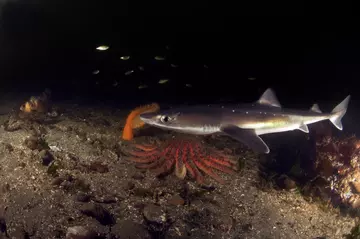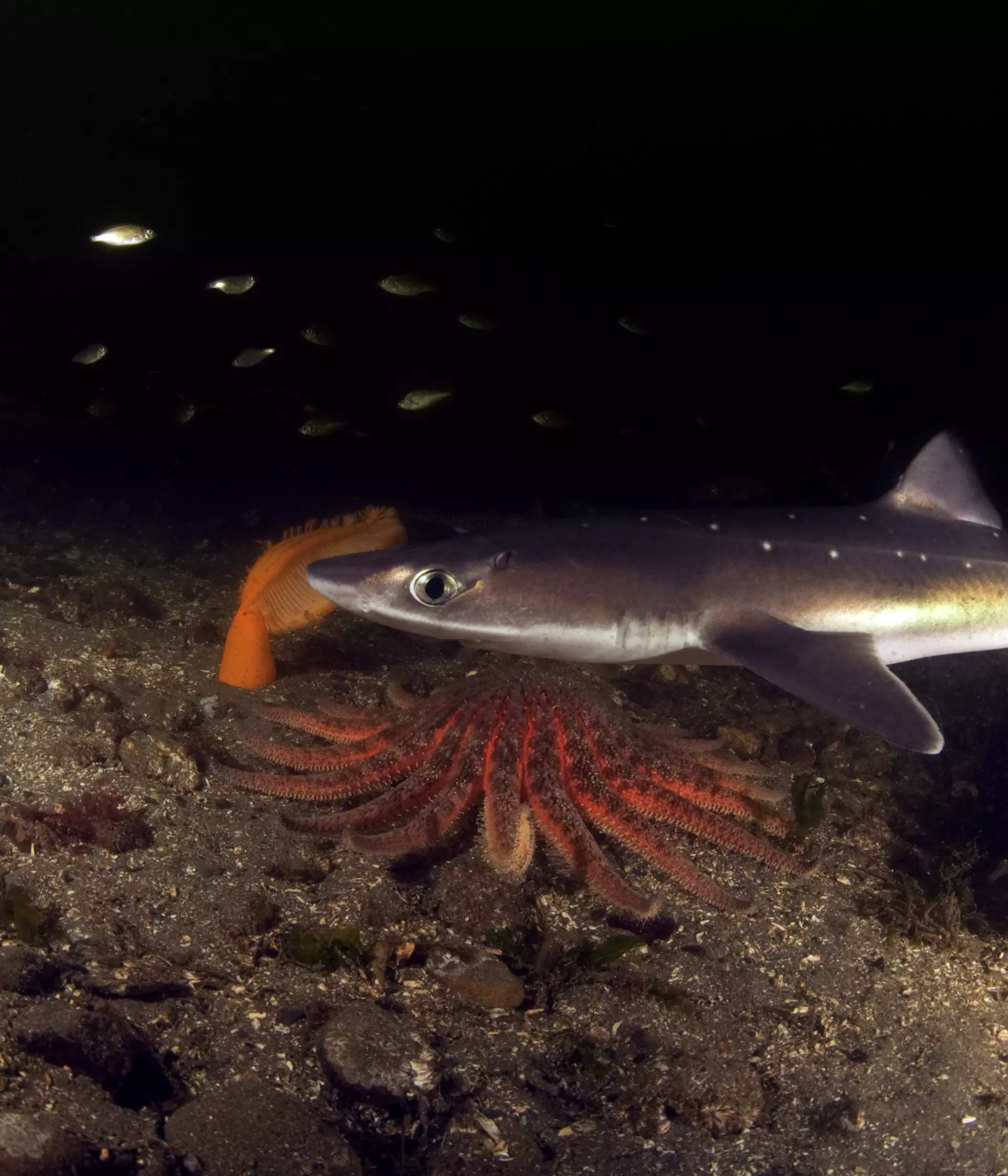Sharks in the Thames
The Thames estuary is known to be home to at least five different species of shark, including the Critically Endangered tope shark (or ‘soupfin’ shark) and starry smoothhound sharks. Tope and starry smoothhound give birth to live young and it is believed they use the estuary as pupping grounds and nursery habitats for their young. There is still little known about how exactly these sharks use the Thames estuary and why. We are working together with anglers to better understand the importance of the Thames estuary to these animals and to ensure their long-term survival in the wild.
Tope shark facts (Galeorhinus galeus)
The only shark in the genus Galeorhinus
Also known as the School Shark, Soupfin Shark, Snapper Shark, and the Vitamin Shark.
Historically caught for ‘liver oil’.
Critically Endangered globally on the IUCN Red List of Threatened Species.
Can grow up to 190 cm long and live for over 50 years.
Mature between 10 to 17 years old and only give birth to pups every two to three years. It has recently been discovered that they return to the same spot every three years as part of their reproductive cycle.
Highly migratory - moving towards to poles in the summer to pup and towards the equators in winter
A tope that was tagged in Scotland turned up over 5 years later in Sicily in the Mediterranean.
Adult tope feed on cephalopods and pelagic fishes, while juvenile tope prefer to feed on benthic invertebrates.
Starry Smoothhound shark facts (Mustelus asterias)
Commonly referred to as ‘Hound Sharks’
Starry smoothhound is listed by the IUCN red list as Near Threatened – meaning that their population trend is decreasing and one step away from being vulnerable to extinction.
Smaller sharks with a maximum size of 140 cm.
Normally have a scattering of small, bright white spots along their back, which give them their name of ‘starry’.
Through genetic studies, it has been shown that they are the only species of smoothhound in our waters
Found at depths of up to 200 metres and feeds almost exclusively on crustaceans
Offspring from 3 different fathers have been found in a single litter
Understudied shark with limited data but increasing commercial interest.
Spurdog shark facts (Squalus acanthias)
Also known as the Spiny Dogfish, Cape Shark, or Piked Dogfish.
They have sharp spines in front of their first and second dorsal fins.
Lives on the continental shelf of temperate seas worldwide, including the Northeast Atlantic.
Can inhabit deeper waters up to 900m, but usually found in waters shallower than 200m.
They are a schooling shark with gestation periods of up to 24 months and a long generation time of up to 40 years, which makes it vulnerable to overfishing.

Discover more about our work across the UK, whether surveying sharks, reintroducing dormouse, or supporting hedgehogs.
